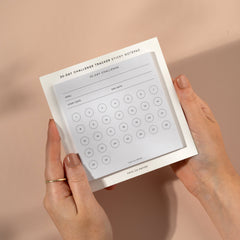In our hyper-connected world, digital engagement has become a constant companion in our daily lives. Yet, this constant connectivity comes at a price. Many of us are experiencing symptoms of mental exhaustion, blurry vision, sleep disruption, and lack of focus are classic signs of digital fatigue. Fortunately, there are effective digital fatigue solutions that can help restore balance and boost overall wellbeing.
What is Digital Fatigue?
Digital fatigue refers to the mental and physical exhaustion that results from prolonged use of digital devices. With screens dominating workspaces, social interactions, and even relaxation time, it’s no wonder our brains and bodies are crying out for rest.
Whether it’s the endless Zoom meetings, mindless scrolling through social media, or working late into the night on a laptop, our screen time has skyrocketed. As a result, issues such as eye strain, poor posture, disrupted sleep, and lack of mental clarity have become commonplace.
Recognising the Signs: Do You Have Digital Fatigue?
Before we explore digital fatigue solutions, it’s important to recognise the symptoms. Common signs include:
-
Frequent headaches
-
Irritated or dry eyes
-
Trouble focusing
-
Decreased productivity
-
Insomnia or poor sleep quality
-
Feelings of burnout or stress
If you identify with several of these, it’s time to consider taking action.
Digital Fatigue Solutions for Daily Life
Here are practical and sustainable digital fatigue solutions to help reduce the impact of technology on your mental and physical health.
1. Implement Screen-Free Rituals
Create intentional moments in your day without digital devices. For example, start your morning with a cup of tea and journaling instead of diving into emails. In an age of digital overload, pen and paper remain essential tools for clarity, focus, and a more intentional daily rhythm. Switching to analogue tools is a simple yet powerful way to reconnect with the present moment.
2. Use the 20-20-20 Rule
To reduce eye strain, adopt the 20-20-20 rule: every 20 minutes, look at something 20 feet away for 20 seconds. This gives your eyes a break and prevents the discomfort associated with staring at a screen for hours on end.
3. Schedule Regular Digital Detoxes
Even brief breaks from technology can make a huge difference. Consider setting boundaries around your digital use, such as no phones at the dinner table or a weekend digital detox once a month. These breaks can refresh your mind and reignite your creativity.
4. Curate Your Digital Environment
Not all screen time is created equal. Minimise exposure to negative or overwhelming content by curating your feeds and unsubscribing from non-essential notifications. Using apps like Forest or Freedom can help you block distractions and reclaim your focus.
5. Invest in Blue Light Protection
Blue light from screens can disrupt sleep and contribute to eye strain. Use blue light blocking glasses or activate night mode on devices, especially in the evening. This small change can dramatically improve your sleep quality.
Work-Related Digital Fatigue Solutions
For those working remotely or in screen-heavy roles, digital fatigue can be particularly intense. Here are strategies tailored to professional environments:
6. Time Block Your Tasks
Instead of multitasking, which can heighten fatigue, adopt time-blocking. Dedicate chunks of time to specific tasks and include short breaks in between. This can enhance productivity while reducing mental overload.
7. Take Movement Breaks
Incorporate movement into your day, such as standing up, stretching, or a short walk. This not only relieves physical tension but also boosts circulation and mood.
8. Create a Dedicated Work Space
Separate your work area from your leisure space to help signal to your brain when it’s time to work and when it’s time to rest. This physical boundary is key in reducing digital burnout.
 Long-Term Lifestyle Changes
Long-Term Lifestyle Changes
Digital fatigue solutions are most effective when integrated into a long-term lifestyle shift. Here are a few sustainable changes:
9. Reconnect with Nature
Spending time outdoors helps reset our internal clocks and reduces stress. A daily walk in the park or weekend nature trips can be immensely restorative.
10. Prioritise Sleep Hygiene
Proper sleep is essential for managing digital fatigue. Instead of scrolling or watching Netflix, try winding down with a soothing activity like reading a physical book, writing in a mindful journal, or repeating calming affirmations to ease your mind and promote restful sleep.

11. Practice Mindfulness and Meditation
Mindfulness practices help you become more aware of your digital habits and allow for conscious decision-making around screen use. Apps like Headspace or Calm (available at headspace.com) offer guided sessions that can ease mental tension and promote clarity.
A Balanced Future
Digital fatigue is a modern-day challenge, but it is manageable with thoughtful strategies. By implementing these digital fatigue solutions, you can reclaim your focus, reduce stress, and enhance your overall quality of life.
Remember, technology is a tool not a tether. Rebalancing your digital life can lead to more presence, peace, and productivity.




Leave a comment